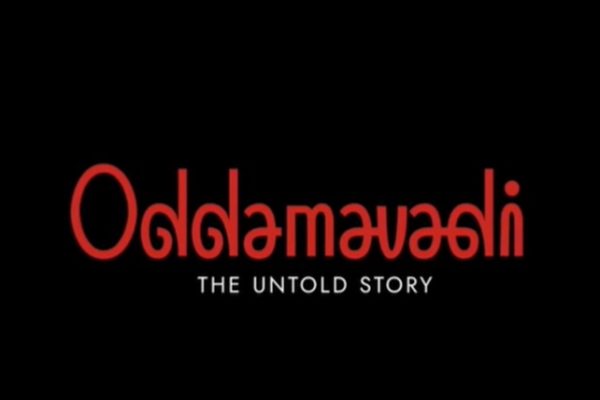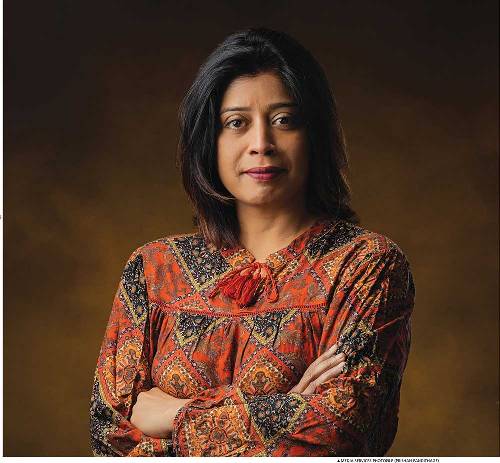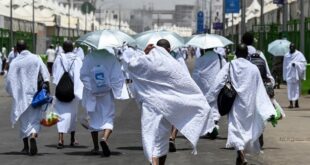Muslims across the island joined in the national celebrations that marked the end of three decades of war, culminating in the liberation of the brutalized Tamils, Muslims, and Sinhalese of the Northern and Eastern Provinces of Sri Lanka. Indeed, the end of Velupillai Prabakaran, signifies the liberation of the entire country, nearly 504 years after the Portuguese invasion of Sri Lanka in 1505. Mosques, Muslim homes and businesses joined the rest of the country in hoisting the National Flag and saluting the armed forces.
Many of them stopped their vehicles at check points and served sweets to the young soldiers on duty. I heard of many others who had walked into Buddhist temples and shared their new found joy of “freedom with security”. There were still others who shared with the Tamils, the freedom that they would henceforth enjoy in the North, in an identical manner they did in the rest of the country.
The purpose of this contribution is limited to place the answers to these questions before the public, though it is time that the Muslims consider serious programmes that will help the community forge ‘unity in diversity’ and ‘integration with identity’.
Muslims, particularly of the North and East, became the first major obstacle to the Eelam project, to which more detailed reference will be made later on. Muslim resistance resulted in the expulsion of over 100,000 Muslims from the North by the LTTE, followed by the killings of large numbers of Muslims by the LTTE in several districts in the east ending in brutal massacres.
It is best that I quote the Minister of Foreign Affairs of Sri Lanka Rohitha Bogollagama, who addressing a meeting of Heads of Missions of Muslim countries based in Colombo on 11th March, 2009 soon after the suicide bomb attack at the Godapitiya Jumma Mosque in Akuressa, targeting the National Milad-un-Nabi festival, on 10th March, had this to say:
“The Muslim community in this country has co-existed peacefully with both the Sinhalese and the Tamil communities and lived amidst them for centuries. The Muslims, particularly in the North and the East of Sri Lanka have been especially targeted by the LTTE for their resolute opposition to the separatist agenda espoused by the LTTE. For their stubborn defiance, the Muslims have paid a heavy price. The LTTE commenced its murderous campaign against the Muslims in the East by launching coordinated attacks on the Meera Jumma and Husseiniya Mosques in Kattankudy on 3rd August 1990, in which 147 worshippers were gunned down, as they knelt in prayer. The fear psychosis that was instilled in the Muslim community by the LTTE was reinforced by further massacres carried out on isolated Muslim villages in the Eastern Province. The Palliyagodella village was targeted in October 1991 in which 109 Muslim men, women and children were brutally hacked to death in their sleep by women and child cadres of the LTTE. This also marked the beginning of the induction of women and children by the LTTE to carry out cold blooded massacres of civilians in other parts of the country as well.”
“The ethnic cleansing of the entire Muslim community in the Northern Province, which the LTTE carried out in October 1990 with cold blooded and clinical precision, stands out in the annals of world history as a chapter written in shame of the wholesale uprooting and expulsion of an entire ethnic community which has lived for generations in that part of the country. Even today, 18 years after this shameful incident, these Muslims numbering over 100,000 are still languishing in IDP camps in the Puttalam district and other parts of Sri Lanka, as refugees in their own country.”
The end of the LTTE, responsible for these massacres caused to the Muslims – because they were Muslims – is sufficient cause for the Muslims of Sri Lanka to celebrate firstly as Sri Lankans but more so as Muslims. Their resistance to Eelam was the first major obstacle that helped defeat terrorism in Sri Lanka.
Another relevant factor to be recalled in this connection is that many Muslims who served in the country’s forces, mainly from the Malay community of Muslims, have laid down their lives in battling terrorism.
They are too many to be named here. All credit should no doubt go to the Commander in Chief President Mahinda Rajapakse, his brother, Defence Secretary Gotabhaya Rajapakse, the Service Commanders and their men and women and to all those mostly from the forces who laid down their lives in this war.
Equally important is the role played by Members of Parliament, in ensuring that the Mahinda Rajapakse government enjoyed a secure majority in Parliament, throughout the period of the war. For a Government threatened to be defeated in the first Budget it presented to Parliament, credit must be given to President Rajapakse and his brother M.P. Basil Rajapakse for ingeniously ensuring a stable parliamentary majority, which included almost all the Muslim Members, who stood with the Government all along the war, excluding an insignificant minority.
The country will not forget another factor of relevance which contributed immensely for the government’s successful prosecution of the war, namely the contribution of Muslim countries in contrast to many countries from the West. Pakistan, Iran and Libya, in addition to China came out effectively to off-set the negative impacts on the country’s external resources, vital to continuously oil the war machinery and replenish stocks.
India, our important and immediate friend, helped notwithstanding all local pressures to the contrary, from Tamil Nadu. Pakistan and China supplied essential weapons, though at a price while Iran kept Sri Lanka economically going in 2008 with an interest free credit package for oil purchases valued at US$ 700 Million, in addition to two major project aids to the tune of US$ 1.4 Billion, the highest single country contribution to Sri Lanka, so far. The oil credit package helped Sri Lanka defeat the LTTE’s expectations of an economic fall out of the Sri Lankan Government.
PART II
In assessing the Muslims’ contribution
by 1985, the LTTE was growing as a critical force in the East, following the failure of President Jayawardene from 1978 onwards, to crush the LTTE then in its formative years. I had by 1983 left the Attorney-General’s Department as Senior State Counsel, after 10 years of service to the state. I had retainers from the Eastern Courts and the late M.H.M. Ashraff at that time had a wide practice in the courts of law in the East. Hashim, a former teacher and Advocate from Akkaraipathu who first alerted me to the coming events. His own son had become the Area Leader of the LTTE for Akkaraipathu. He was angry he could not stop his own son from joining the armed group. There were several other young Muslims who were joining the LTTE in numbers. They had lost confidence in both the UNP and the SLFP, and that was why they were joining the Tamils fighting for autonomy, he told me, and if this is not stopped, this would spell great danger, more for the Muslims outside the North-East. I spoke to Ashraff, I told him, the time has come for us to address this growing danger of Muslim boys joining the LTTE. He understood the repercussions and the likely fall-out. He was ready to give up his lucrative practice and form a Muslim Party, as the only way to arrest all possible damages.
As law students, we had our sympathies with the SLFP, following the post of Minister of Education being given to a Muslim, the late Dr. Badiuddin Mahmud by Mrs. Sirimavo Bandaranaike. Ashraff said a Muslim party was the only answer to prevent Muslims joining the LTTE. He also said, that we could not tell this reason to the country, as it would spell disaster for the Muslims in the East. I told him that the party must be confined to the East, as the majority in the South could misinterpret and become suspicious. He said the party, could not be either pro or anti-LTTE, as that would create problems for the Muslims in the East, who were living with the Tamils peacefully, as much as with the Sinhalese in the South. He was clear of the need to form a Muslim party, to absorb the Muslim youths and prevent the spread of the LTTE amongst the Muslims in the East.
Months later, the Sri Lanka Muslim Congress was formed in the East, with its leader Ashraff having to walk a ‘tight rope’ of keeping Muslim interests to be seen neither as anti-Sinhala nor anti-Tamil. This was an exceptionally challenging task for the SLMC with both the Sinhala and Tamil leaders soon becoming suspicious. The suspicions were mainly due to the superficial and shallow response of politicians and sections of the media to the major event of the emergence of a Muslim political party. Muslims in the UNP as well as the SLFP too found the SLMC an unhappy irritant.
Muslims in the east, however, joined the SLMC in large numbers .Whilst the SLMC succeeded in attracting the youths, the LTTE saw a huge threat in the SLMC for its projected objective of exclusive control over the North-East as the Tamil speaking homeland. LTTE’s attempts to give leadership to the Tamil speaking Muslims of the East was now doomed to fail with the SLMC emerging as the sole voice of the Muslims of the East,
The country must pay a tribute to the Muslims of the East, who stood under Ashraff’s SLMC flag and resisted firmly at a huge cost to their community, the LTTE’s attempts to inveigle the East into the tiger empire. This was indeed the first major obstacle to the Tiger dream of a Tamil homeland.
Previously labelled as ‘Tamil Speaking’ homeland, the LTTE soon found its attempts to encompass the culturally distinct, politically independent Eastern Muslims, who comprise nearly 1/3rd of the Muslim population of over two million in the entire country a frustrating failure! The repercussions were unbearably grave. Hundreds of Muslims whilst at prayers inside mosques, were brutally murdered, hundreds of Muslim policemen were lined up by the LTTE separated from Tamil policemen and shot to death, and large numbers returning home after performing Haj were ruthlessly assassinated by the LTTE.
Muslim businessmen, farmers, their farm lands and even their cattle were not spared. All this happened after nearly 100,000 Muslims were forcibly driven out from their homes in the North overnight and who found refuge in Puttalam, Anuradhapura and Polonnaruwa districts, where I led a team of FAMYS (Federation of Assemblies of Muslim Youths of Sri Lanka) volunteers from Colombo as the first group to help, with a Libyan donation of US$ 50,000.
In my view, the sacrifice of hundreds of lives of Muslims, the pain and suffering of thousands of other Muslim men, women and children exposed to LTTE brutalities – similar to the atrocities suffered by the Sinhalese – would place the Muslim resistance to the LTTE’s attempts to eelamise the East far above that of the much touted and most welcome defection of Karuna Amman alias Vinayagamoorthy Muralidaran and others from the LTTE. If the Muslims had lost sympathy for the Tamil struggle, the LTTE must blame only itself and perhaps also its arrogance.
It would not be an exaggeration to place on record that if not for the Muslim resistance beginning in the 1980’s the LTTE would have seen the birth of ‘Eelam’ comfortably, with the consequence of instant recognition by the West, ala Kosovo! When the opening paragraph of the Vaddukoddai Resolution of 14th May, 1976 of the ‘moderate’ Tamil United Liberation Front (TULF) referred to the “Tamils possessing the Northern and Eastern districts” – to the diabolical exclusion and the arrogant marginalisation of the Muslims and the Sinhalese – there was nothing that the Muslims could have hoped for, from the terribly extremist LTTE!
Post Disclaimer | Support Us
Support Us
The sailanmuslim.com web site entirely supported by individual donors and well wishers. If you regularly visit this site and wish to show your appreciation, or if you wish to see further development of sailanmuslim.com, please donate us
IMPORTANT : All content hosted on sailanmuslim.com is solely for non-commercial purposes and with the permission of original copyright holders. Any other use of the hosted content, such as for financial gain, requires express approval from the copyright owners.
 Sri lanka Muslims Web Portal Sri Lanka Muslims News Center
Sri lanka Muslims Web Portal Sri Lanka Muslims News Center



